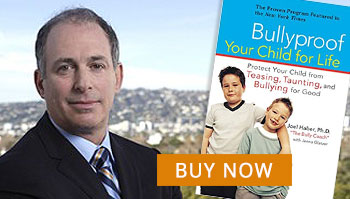
Copyright: dolgachov / 123RF Stock Photo
Parents have a great opportunity to teach their kids what we call good bystanders, upstanders or allies, which supporting a kid whose targeted. How Can A Bystander Stop Bullying?
I like the word allies because it means that kids who are targeted need someone to help them. But a culture in a school is the first thing to happen to help a kid feel safe, to do the right thing. If a child feels like they are going to be picked on themselves, if they stand up and say something, they are not going to do it. So a culture that rewards upstander behavior or ally behavior, is doing the right thing.
Now, here are the tools. If your child is being bullied, what does the child need? They need support. I divide upstander support in two ways. Most kids won’t do the high-risk behavior, which is getting up in front of a bully and telling them to stop, because it’s too scary, it’s too risky.
I don’t think they should do that unless they are totally comfortable with themselves. Only a small percentage of kids will do that. What they can do is low-risk behaviors, which support a child. They can stand next to the child if they are comfortable. Later on, they can go up to the child and say,
“I’m really sorry that happened. I didn’t know what to do. I was afraid, but let’s go tell a teacher together. Why don’t you walk with me to class tomorrow? Spend time with me at lunch.”
They show support so the child who is targeted doesn’t feel alone. You encourage children to do what’s right and support someone, you build their empathy.
They are better citizens.
They feel better about themselves.
We have to have a culture that encourages that. As a parent, you need to tell them to do something, because if they just watch and do nothing, they actually support the bullying child.
Here is a great resource to find an online therapist if you feel your child is in need.
Dr. Haber is available for speaking engagements and consultations to help your combat your school or workplace bullying issues.
Dr. Joel Haber
